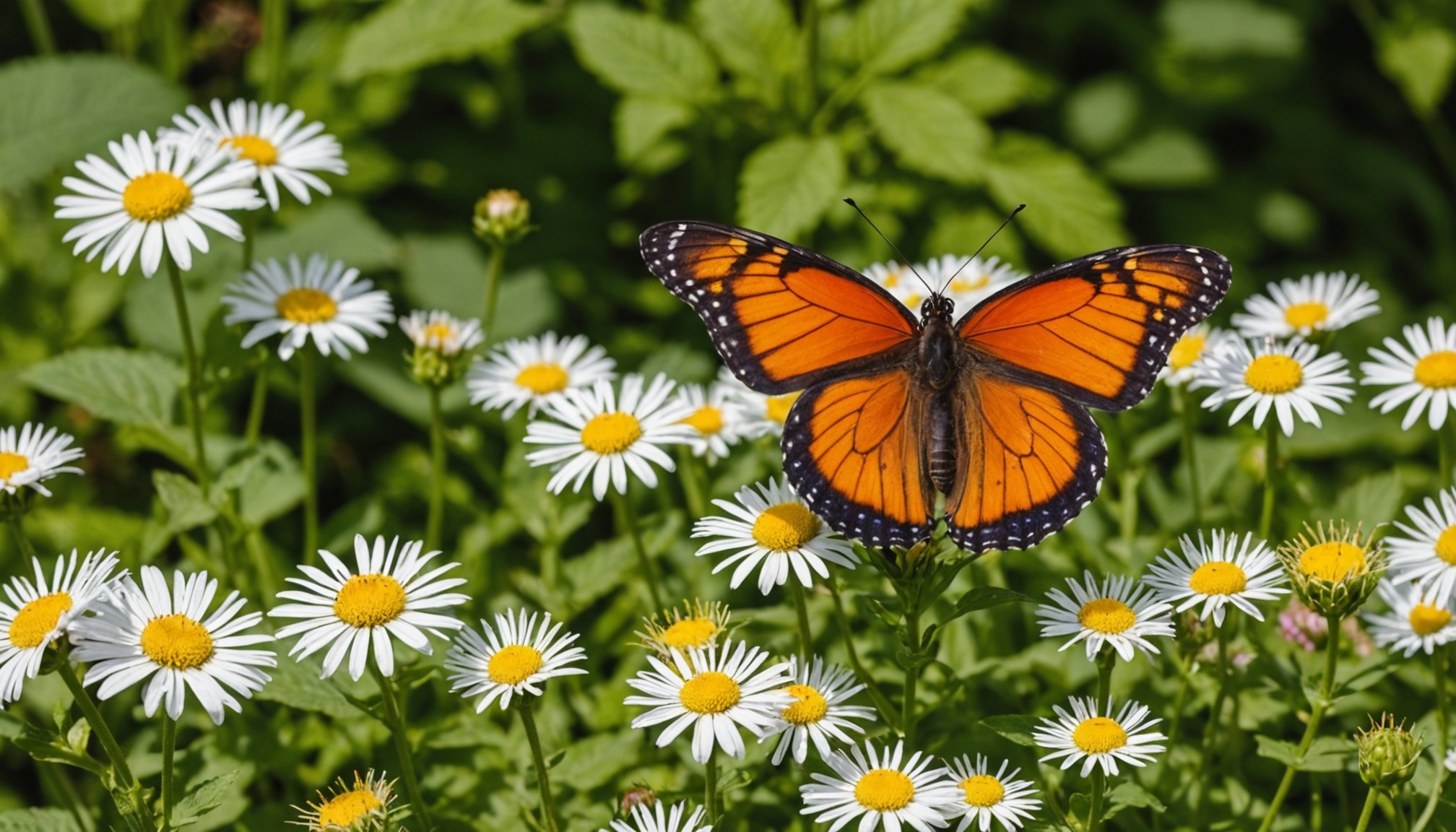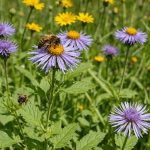Creating a butterfly garden offers a delightful opportunity to contribute to the UK's biodiversity while enjoying nature's beauty. These vibrant spaces provide essential habitats for declining butterfly populations, fostering ecological balance. With the right plants, you can transform your garden into a sanctuary that not only attracts butterflies but also supports other wildlife. Discover how nurturing your green space can yield environmental benefits and provide a serene escape from daily life. Embrace the joy of gardening while making a positive impact on local ecosystems.
Importance of Butterfly Gardens in Enhancing UK Biodiversity
Exploring the ecological benefits of butterfly gardens in the UK
Avez-vous vu cela : Top Native UK Flowers for Optimal Honeybee Nutrition: A Guide for Gardeners
Overview of Biodiversity Challenges
The UK biodiversity faces numerous challenges, including habitat loss and climate change. These factors significantly impact local ecosystems, reducing species diversity. Butterfly gardens offer a solution to these challenges, providing essential habitats for butterflies and other pollinators.
Role of Butterfly Gardens
Butterfly gardens play a crucial role in supporting local ecosystems by offering nectar-rich plants and shelter. They serve as mini-habitats within urban areas, promoting ecological balance. A well-planned garden can attract various butterfly species, enhancing UK biodiversity.
Dans le meme genre : Top Native UK Flowers for Optimal Honeybee Nutrition: A Guide for Gardeners
Contribution to Urban Greening
Urban areas often lack green spaces, which can negatively affect biodiversity. Butterfly gardens contribute to urban greening efforts by transforming concrete landscapes into vibrant ecosystems. They not only beautify cities but also support wildlife.
Benefits of Butterfly Gardens:
- Enhance UK biodiversity by attracting diverse species
- Provide educational opportunities about biodiversity
- Support urban greening initiatives
A quote from a conservation expert highlights their significance: "Butterfly gardens are vital in reversing biodiversity loss in urban settings."
In summary, butterfly gardens are indispensable for enhancing UK biodiversity. They address ecological challenges while contributing to urban greening, making them a vital component of sustainable city planning.
Designing Your Butterfly Garden
Creating a haven for butterflies starts with thoughtful planning.
Key Elements for a Butterfly Garden
To craft an effective butterfly garden design, focus on essential elements. Begin with a variety of nectar-rich plants that cater to different butterfly species. Incorporate native plants as they are well-suited to local climates and provide the best resources for butterflies.
Key Elements:
- Nectar-rich plants for food
- Native plants for adaptability
- Shelter and sun exposure considerations
Importance of Native Plants
Native plants are crucial for a thriving butterfly habitat. They offer food and shelter that are naturally aligned with local butterfly species' needs. Selecting native plants ensures that your garden supports the ecological balance and biodiversity of the area.
Layout Considerations
When designing your butterfly garden, consider the layout for optimal sun exposure and shelter. Butterflies need warmth to thrive, so position nectar-rich plants in sunny spots. Additionally, provide sheltered areas to protect them from harsh weather and predators.
Quote from a gardening expert: "Incorporating native plants and mindful layout choices can transform any space into a vibrant butterfly habitat."
In summary, thoughtful garden design with a focus on native plants and strategic layout can create an inviting and sustainable butterfly habitat.
Suitable Plants and Flowers for Your Garden
Creating an inviting environment for butterflies requires careful plant selection.
Native Plants that Attract Butterflies
Choosing the right butterfly-friendly plants is essential for a thriving garden. Native plants are particularly effective, as they are adapted to local conditions and naturally attract butterflies. Consider including pollinator plants like Common Knapweed, Field Scabious, and Bird's-foot Trefoil. These species provide essential nectar and support the local ecosystem.
Seasonal Blooming for Continuous Food
To ensure a continuous food source, incorporate a variety of seasonal blooming plants. This approach guarantees that butterflies have access to nectar throughout the year. Early bloomers such as Primrose and late bloomers like Michaelmas Daisy can sustain butterflies from spring to autumn.
Bulleted List of Seasonal Blooming Plants:
- Spring: Primrose, Cowslip
- Summer: Marjoram, Red Valerian
- Autumn: Michaelmas Daisy, Ivy
Importance of Host Plants for Caterpillars
In addition to nectar sources, host plants are crucial for caterpillar development. These plants provide food for caterpillars and support their life cycles. Consider planting Common Nettle and Holly to cater to specific butterfly species. By including a variety of host plants, your garden can support multiple stages of butterfly life.
Tips for Attracting Various Butterfly Species
Enhance your garden's appeal to diverse butterfly species.
Strategies for Attracting Specific Butterfly Species
To attract specific butterfly species, tailor your garden with plants that cater to their unique preferences. For instance, the Painted Lady butterfly is drawn to thistles and hollyhocks, while the Small Tortoiseshell favors nettles. By researching and incorporating these plants, you can create a welcoming environment for a variety of species.
Creating Microhabitats Within Your Garden
Microhabitats can significantly enhance your garden's attractiveness to butterflies. These are small, distinct areas that mimic natural habitats. Incorporate features like small water sources, rock piles for basking, and dense shrubs for shelter. These elements provide essential resources, encouraging butterflies to visit and stay.
Maintenance Tips to Keep the Garden Inviting for Butterflies
Regular garden maintenance is crucial for sustaining an inviting butterfly habitat. Keep plants healthy by watering and pruning them as needed. Remove invasive species that might compete with butterfly-friendly plants. Additionally, avoid using pesticides, as they can harm butterflies and other beneficial insects.
Bulleted List of Maintenance Tips:
- Water plants regularly
- Prune overgrown areas
- Remove invasive species
- Avoid pesticides
By focusing on these strategies, you can create a thriving environment that attracts and supports various butterfly species.
Ecological Significance of Butterfly Gardens
Exploring the profound impact of butterfly gardens on ecosystems
Role of Butterflies as Indicators of Environmental Health
Butterflies are vital indicators of environmental health, reflecting the state of local ecosystems. Their presence in butterfly gardens signals a thriving biodiversity, as they are sensitive to environmental changes. A decline in butterfly populations often indicates broader ecological issues.
Benefits of Increased Pollination for Local Food Systems
Butterfly gardens enhance biodiversity conservation by supporting increased pollination. This is crucial for local food systems, as many crops depend on pollinators for fruit and seed production. By fostering a diverse range of pollinators, these gardens help sustain agricultural productivity.
- Pollination benefits:
- Supports crop yields
- Enhances food security
- Boosts local economies
How Butterfly Gardens Contribute to Climate Resilience
Incorporating butterfly gardens into urban planning can bolster climate resilience. These gardens provide essential ecosystem services, such as carbon sequestration and temperature regulation. By mitigating urban heat and supporting diverse species, they contribute to a more resilient environment.
A conservation expert notes, "Butterfly gardens are not just pretty spaces; they are critical in building ecological resilience and ensuring sustainable futures." By understanding their ecological significance, communities can better appreciate and implement these gardens for long-term environmental benefits.
Community Involvement and Educational Opportunities
Fostering a deeper connection with nature through butterfly gardens.
Ideas for Community Projects
Engaging the community in butterfly gardening can significantly boost biodiversity awareness. Community projects, such as creating shared butterfly gardens in local parks, provide hands-on experiences. Residents can participate in planting native plants and maintaining these gardens, fostering a sense of ownership and pride.
Bulleted List of Community Projects:
- Organize butterfly garden workshops
- Host planting days for families
- Develop a community seed exchange program
Educational Programs for Schools and Local Groups
Schools and local organizations can integrate educational initiatives focusing on biodiversity awareness. Programs may include workshops on the ecological role of butterflies, or field trips to observe butterfly gardens. These activities offer students and community members a practical understanding of biodiversity and conservation efforts.
Promoting Awareness of Biodiversity
Promoting biodiversity awareness through butterfly gardens is crucial. Public talks, informational signage in gardens, and social media campaigns can highlight the importance of biodiversity. A conservation expert states, "Engaging communities through butterfly gardens is a powerful way to promote environmental stewardship."
Such initiatives not only educate but also inspire communities to actively participate in conservation, fostering a collective responsibility towards enhancing local ecosystems.










